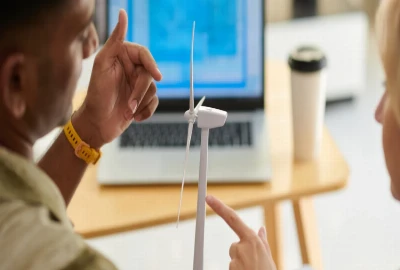The Sitcom Isn’t Dead — It Just Moved to YouTube

For decades, the sitcom was the crown jewel of television. From “Friends” and “Seinfeld” to “The Office” and “Modern Family,” sitcoms were the backbone of primetime programming, shaping how generations laughed together. But as streaming took over and traditional TV audiences shrank, many declared the sitcom dead. Ratings declined, network pilots faltered, and studio audiences seemed like relics of another era.
Yet, the truth is more nuanced. The sitcom isn’t dead—it just migrated. Instead of fading away, sitcom energy and storytelling have found a new home on YouTube and other digital platforms. Creators are reimagining comedy in bite-sized sketches, web series, and experimental formats that thrive outside the boundaries of network schedules and 22-minute runtimes.
This shift isn’t just about where sitcoms live—it’s about how they’re written, produced, and consumed. In this blog, we’ll explore the rise of the YouTube sitcom, why the format adapts so well to the internet, who the major players are, and how this transformation is reshaping the future of comedy.
Why the Sitcom Format Thrives on YouTube

The sitcom has always been built on strong characters, recurring dynamics, and relatable humor. These ingredients translate seamlessly to YouTube, where audiences crave familiarity but also flexibility in how they consume stories.
Short-Form Adaptability
Traditional sitcoms were locked into 22-minute slots because of TV schedules and advertising breaks. On YouTube, episodes can last five minutes or fifty, depending on creative needs and audience attention spans. This freedom allows creators to experiment without the constraints of broadcast structures. Sketch-style comedies like “Smosh” or narrative-driven channels like “Wong Fu Productions” showcase how sitcom beats can be condensed into shorter, snappier episodes while retaining the humor and heart.
Direct Audience Engagement
One of YouTube’s strengths is community building. Unlike TV, which relies on ratings and critics, YouTube sitcom creators engage directly with fans through comments, livestreams, and social media. This feedback loop helps shape storylines and makes viewers feel like co-creators in the comedy experience. In many ways, YouTube resurrects the communal laughter sitcoms once inspired—but in a digital format.
Lower Barriers to Entry
Traditional sitcoms required major networks, big budgets, and studio backing. On YouTube, anyone with a camera, editing software, and a clever idea can create their own sitcom-style content. While not every attempt becomes the next “Friends,” the accessibility of the platform has democratized comedy storytelling. This influx of diverse voices has brought fresh perspectives to a genre once dominated by predictable tropes.
The Rise of YouTube Sitcom Creators

Behind the migration of sitcoms to YouTube are pioneering creators who embraced the platform’s potential to reimagine comedy for digital audiences.
Independent Web Series Success Stories
Series like “Jake and Amir” (born from CollegeHumor) or “The Guild” (a comedy about online gamers) demonstrated early that sitcom-style storytelling could thrive online. These shows combined episodic humor with character-driven arcs, proving that audiences were willing to follow serialized comedy outside traditional television.
Comedy Collectives and Studios
Groups like Smosh, Key & Peele’s digital sketches, and later Good Mythical Morning have adopted sitcom beats within their formats. Whether it’s through recurring characters, situational setups, or workplace-style banter, these creators bring familiar sitcom rhythms to YouTube in creative, fast-paced ways.
Representation and Diversity in Online Comedy
YouTube sitcoms often feature casts and storylines rarely prioritized by networks. Creators like Issa Rae, whose web series “Awkward Black Girl” paved the way for her HBO hit “Insecure,” showcase how YouTube sitcoms can be a launching pad for diverse voices. These stories not only challenge sitcom stereotypes but also reflect the realities of audiences underserved by mainstream TV.
How YouTube Changed Sitcom Storytelling

Moving sitcoms online didn’t just shift where they’re made—it transformed how they’re told. YouTube’s flexibility and interactive nature have reshaped sitcom conventions in ways that reflect digital culture.
Breaking Free from the Laugh Track
Network sitcoms often relied on laugh tracks or studio audiences to cue humor. On YouTube, comedy doesn’t need artificial prompts. Instead, creators trust audiences to get the joke. The humor feels more authentic, and the absence of canned laughter resonates with viewers who prefer subtler, smarter comedy.
Blending Formats and Genres
YouTube sitcoms often blur the lines between sketch, vlog, and traditional narrative. Shows may mix mockumentary styles with direct-to-camera confessions or blend scripted stories with improvisation. This hybridity reflects internet culture itself, where memes, commentary, and parody coexist in one feed.
Experimenting with Episodic Flow
On TV, sitcoms reset at the end of every episode, returning characters to the status quo. YouTube sitcoms often experiment with longer arcs, cliffhangers, or character development over time. This allows for greater emotional depth while still delivering the comedic beats audiences expect.
The Economics of Sitcoms in the YouTube Era

The sitcom’s migration to YouTube also reveals how the economics of comedy have changed in the digital age.
Monetization Beyond Ad Revenue
While ad revenue remains central, many YouTube sitcom creators rely on Patreon, sponsorships, and merchandise sales to sustain production. This funding model empowers creators to stay independent while building loyal fan bases that directly support their work.
Lower Production Costs, Higher Creativity
Network sitcoms required expensive sets, writers’ rooms, and production crews. On YouTube, sitcoms can thrive with minimal budgets. Many creators shoot in apartments, offices, or local coffee shops. This forces creators to prioritize strong writing and performances—hallmarks of classic sitcoms—over glossy production.
Opportunity for Mainstream Crossovers
YouTube has become a talent pipeline for Hollywood. Issa Rae, Broad City creators Ilana Glazer and Abbi Jacobson, and even Bo Burnham started online before transitioning to mainstream success. For networks and streamers, YouTube functions as a testing ground for new sitcom concepts with built-in fan bases.
The Future of Sitcoms: Hybrid Platforms and Global Reach

The sitcom isn’t just surviving on YouTube—it’s evolving into something new, with possibilities that extend far beyond the platform.
Hybrid Streaming Models
Streaming platforms like Netflix and Hulu now experiment with short-form sitcoms inspired by YouTube sensibilities. Shows like “Special” and “American Vandal” blend internet humor with sitcom storytelling, reflecting how digital-first comedy influences mainstream entertainment. The future may see hybrid models where sitcoms launch online before transitioning to streaming or TV.
Global Audiences and Cross-Cultural Comedy
Unlike traditional TV, which was limited by geography, YouTube sitcoms reach global audiences instantly. A comedy series produced in India, Nigeria, or Brazil can attract fans worldwide. This global reach expands the sitcom’s potential, introducing audiences to cultural humor they might never encounter on network TV.
The Enduring Power of Relatability
Ultimately, the sitcom’s survival comes down to one thing: relatability. Whether it’s a quirky roommate dynamic, awkward workplace encounters, or absurd family antics, sitcoms thrive on shared human experiences. On YouTube, those experiences are delivered in fresh, diverse, and experimental ways, proving that the sitcom isn’t dead—it’s just reinventing itself for the digital age




